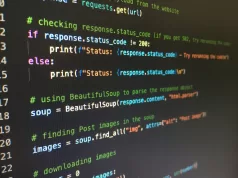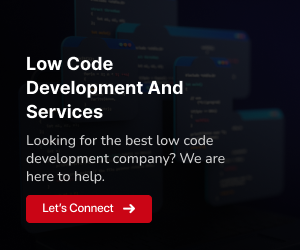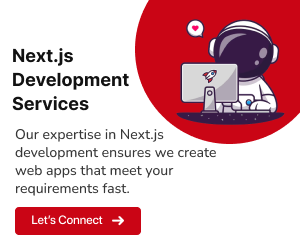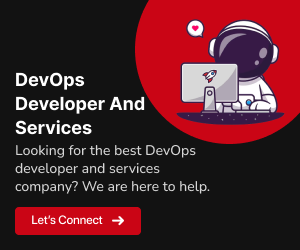Charting Success: A Definitive Guide to Crafting a Cost-Effective Flutter App Development Team in the USA
In today’s fast-paced digital landscape, where mobile apps have become the cornerstone of modern businesses, the quest for an exceptional Flutter app development team is more critical than ever. Building the right team to transform your app concept into reality is a strategic endeavor that demands meticulous planning and precise execution. Our comprehensive guide is your roadmap for navigating the intricate process of constructing a cost-effective Flutter app development team in the United States. From identifying the key players in this competitive arena to defining the scope of your project while staying within budgetary constraints, we’ll guide you through the crucial considerations. Join us on this illuminating journey as we unveil strategies for assembling a dynamic Flutter team that not only meets your expectations but also aligns with your financial goals.
Identifying Team Roles and Expertise
Building a successful Flutter app development team starts with identifying the right roles and expertise required for the project. Each team member plays a crucial role in ensuring the project’s success, and their skills and responsibilities should align with your project’s goals. Let’s dive into the key roles and expertise you need to assemble your dream team:
Developers
Flutter Developers:
These are the backbone of your team. Flutter developers should have in-depth knowledge of Dart programming language and hands-on experience with Flutter. They are responsible for coding and building the mobile app.
Front-End Developers:
While Flutter developers handle cross-platform development, front-end developers ensure the app’s user interface (UI) is visually appealing and responsive. They work closely with designers to implement UI/UX designs.
Back-End Developers:
If your app requires server-side logic or integration with databases, back-end developers are essential. They manage the server, databases, and APIs needed to support the app’s functionality.
Designers
Designers are responsible for creating the visual elements and user experience of the app. They should have expertise in designing intuitive and user-friendly interfaces. Collaboration with developers is key to implementing designs effectively.
Project Managers
A skilled project manager is crucial for keeping the project on track. PMs oversee the project’s timeline, budget, and resources. They facilitate communication among team members and stakeholders, ensuring everyone is aligned with project goals.
Quality Assurance Specialists
QA specialists are responsible for ensuring the app functions correctly and meets quality standards. They design test plans, conduct testing, report and track issues, and work with developers to resolve bugs.
DevOps Engineers
These experts focus on automating and streamlining the development and deployment processes. They help ensure a smooth and efficient workflow, from coding to deployment, which can save time and resources.
Product Owners
These individuals are typically part of the client’s team and act as a bridge between the client and the development team. They provide insights, requirements, and feedback on the app’s features and functionality.
Content Writers
If your app includes textual content, having content writers or copywriters is essential. They create engaging and informative content for your app, including descriptions, help guides, and marketing materials.
Security Experts
In today’s digital landscape, security is paramount. Security experts help identify and mitigate potential security threats, ensuring the safety of user data and the app itself.
Data Scientists (Optional)
If your app involves data analysis, prediction, or machine learning, data scientists can help derive valuable insights from the data collected by the app.
Customer Support
Consider having a customer support team in place to address user queries, issues, and feedback. Providing excellent customer support can enhance the user experience.
Identifying the roles and expertise needed for your Flutter app development team is a critical first step. Depending on your project’s complexity and goals, you may need to adapt and expand these roles. Additionally, effective collaboration and communication among team members are vital for a seamless development process.
Read more: Flutter App Development Tips & Trends to Follow in the USA
Strategies for Recruiting Dedicated Flutter Developers
In this section, we will explore effective strategies for hiring dedicated Flutter developers in the USA. Finding the right talent is a critical step in building a successful Flutter app development team. Here are some key aspects to consider:
Where to Find the Right Talent
Job Platforms:
Utilize popular job platforms and websites to post job listings for Flutter developers. Websites like LinkedIn, Indeed, and Glassdoor can help you reach a broader audience.
Networking:
Attend industry-specific events, conferences, and meetups. Networking with professionals in the Flutter development community can lead to valuable connections and potential candidates.
Freelance Platforms:
Consider platforms like Upwork and Freelancer if you’re open to hiring freelance Flutter developers. These platforms provide access to a global pool of talent.
Referrals:
Encourage employee referrals and recommendations. Your existing team members may know talented developers who are a great fit for your project.
The Interviewing Process
Technical Assessments:
Design technical assessments or coding challenges to evaluate a candidate’s programming skills in Dart and Flutter. Assess their ability to solve real-world problems.
Portfolio Review:
Request candidates to share their portfolios, showcasing their previous Flutter projects. This allows you to assess their design and development skills.
Behavioral Interviews:
Conduct behavioral interviews to gauge a candidate’s soft skills, teamwork, communication, and problem-solving abilities. These skills are crucial for a collaborative work environment.
Culture Fit:
Assess whether candidates align with your company’s culture, values, and mission. Cultural fit contributes to a harmonious and productive team.
Selecting Team Members
Collaborative Approach:
Involve your existing team members in the hiring process. Their input and feedback can be valuable in selecting candidates who will integrate well with the team.
Trial Period:
Consider offering a trial period or a small project to assess a candidate’s performance before committing to a full-time hire.
Remote vs. Onsite:
Decide whether you prefer remote or onsite developers. Remote talent provides flexibility, but onsite developers may offer closer collaboration.
Contract vs. Full-Time:
Determine whether you need full-time, part-time, or contract Flutter developers based on your project’s scope and timeline.
For a comprehensive understanding of the technical and non-technical skills that Flutter developers should possess, as well as their roles and responsibilities, we recommend exploring our blog titled: Finding the Perfect Fit: Hiring Dedicated Flutter Developers in the USA
Mastering Financial Planning: Budgeting and Cost Management
When venturing into hiring a Flutter development company in the USA, comprehending the financial aspects is pivotal. Constructing a successful app necessitates meticulous budgeting, precise cost estimation, and conscientious cost-saving strategies. In this section, we will delve into these indispensable facets of financial planning to empower you with the insights needed for a well-informed decision-making process.
Exploring Financial Aspects:
Project Scope Assessment:
Initiate by meticulously assessing your project’s scope. Gain a profound understanding of its intricacies, required features, and design specifications. A clear grasp of your project’s scope facilitates more precise cost estimates.
Thorough Requirement Gathering:
Collaborate closely with your chosen development partner to gather exhaustive project requirements. This ensures avoidance of unexpected, and often costly, changes during development.
Transparent Communication:
Maintain open and transparent communication with your development team. Candidly discuss your budgetary limitations to ensure alignment with your financial objectives.
Budgeting and Cost Estimation:
Initial Budget Allocation:
Kickstart your project by allocating an initial budget. This budget should encompass development costs, third-party integrations, design endeavors, testing, and a contingency for unforeseen expenses.
Solicit Multiple Quotes:
Seek proposals from various Flutter development companies to acquire comprehensive project estimates. Compare these proposals to secure a competitive price. Exercise caution with significantly lower quotes, as they may compromise quality.
Consider Hourly Rates:
Keep in mind that Flutter developers’ hourly rates fluctuate by location within the USA. Factor this into your cost estimation. Rates generally run higher in tech hubs such as Silicon Valley and lower in other regions.
Scope Adaptability:
Acknowledge that project scope can exert significant influence on costs. Be open to prioritizing features and functionalities to adhere to your budget. Additional features can always be integrated in subsequent phases.
Cost-Saving Measures:
Leverage Cross-Platform Development:
Harness Flutter’s cross-platform capabilities. By employing a single codebase, you can target both Android and iOS, thus reducing development time and costs.
Explore Open-Source Tools:
Investigate open-source tools and libraries to curtail licensing expenses. The Flutter community offers a plethora of valuable resources free of charge.
Prioritize Regular Testing:
While it might seem counterintuitive, investing in comprehensive testing can yield cost savings in the long run. Early issue identification prevents expensive rework down the line.
Plan for Scalability:
Envision your app’s scalability from the outset. A well-structured app can accommodate future growth without necessitating a complete overhaul.
Strategize Maintenance:
Develop a strategy for ongoing maintenance and updates from day one. Routine updates can extend your app’s life cycle and ensure compatibility with evolving platforms and devices.
Budgeting and cost management are pivotal components of engaging a Flutter development company in the USA. By meticulously considering project scope, maintaining transparent communication, and diligently implementing cost-saving tactics, you’ll be better prepared to pursue your app development aspirations while adhering to your budgetary constraints.
Overcoming Team Building Hurdles
Building a Flutter development team in the USA can be a rewarding endeavor, but it comes with its fair share of challenges. In this section, we’ll address common challenges that you may encounter during the team-building process and offer practical solutions to overcome them. Additionally, we’ll discuss how to handle unexpected obstacles that may arise along the way.
Common Challenges in Team Building
Skills Shortage:
Challenge:
Finding developers with the specific skills and experience in Flutter can be challenging, especially in a competitive market.
Solution:
Expand your search to a broader talent pool by considering remote or offshore developers. Invest in training and upskilling your existing team members to meet Flutter’s requirements.
Budget Constraints:
Challenge:
Limited budget may restrict your ability to hire top-tier Flutter developers.
Solution:
Consider hiring junior developers or freelancers to work alongside experienced team members. This blend of skills can be cost-effective while maintaining quality.
Team Collaboration:
Challenge:
Ensuring effective collaboration among team members, especially if they are in different locations, can be a challenge.
Solution:
Implement collaboration tools and project management systems to facilitate communication and coordination. Schedule regular video conferences and status updates to keep everyone aligned.
Attrition Rates:
Challenge:
High turnover rates in the tech industry can lead to team instability.
Solution:
Foster a positive work environment, offer career growth opportunities, and competitive compensation to retain top talent. Maintain documentation and knowledge sharing to mitigate the impact of departures.
Handling Unexpected Obstacles
Despite careful planning, unforeseen challenges can arise during team building. Here’s how to navigate them:
Technological Roadblocks:
Challenge:
Encountering complex technical issues or limitations in your project.
Solution:
Consult with experienced Flutter developers or seek guidance from Flutter’s extensive community. Be prepared to adapt your project’s scope or technology stack if necessary.
Project Delays:
Challenge:
Unforeseen delays can disrupt your project timeline and budget.
Solution:
Build buffer time into your project schedule to accommodate potential delays. Maintain open communication with stakeholders and be transparent about any setbacks.
Resource Allocation:
Challenge:
Balancing resources, including time, budget, and personnel, can be challenging.
Solution:
Continuously assess and adjust your resource allocation based on project progress and priorities. Be prepared to reallocate resources to address critical issues.
Building a Flutter development team is a dynamic process that requires adaptability and resilience. By proactively addressing common challenges, fostering a collaborative environment, and having strategies in place for unexpected obstacles, you can navigate the complexities of team building successfully.
Interested in pursuing a career as a Flutter developer? Explore our comprehensive guide on How to Become a Flutter App Developer in the USA’ for valuable insights and tips
Culminating Thoughts on Building a Cost-Effective Flutter App Development Team in the USA
Embarking on the journey to craft a cost-effective Flutter app development team in the US is a strategic endeavor that demands meticulous planning and thoughtful consideration. This guide has illuminated the path, emphasizing the importance of assessing project scope, wise budgeting, and innovative cost-saving strategies. Armed with this knowledge, you’re poised to assemble a high-performing team capable of breathing life into your app vision while respecting your financial boundaries. As you venture forward, remember that a well-structured team is not merely cost-effective but also the keystone for delivering exceptional mobile experiences in the fiercely competitive realm of app development.



















